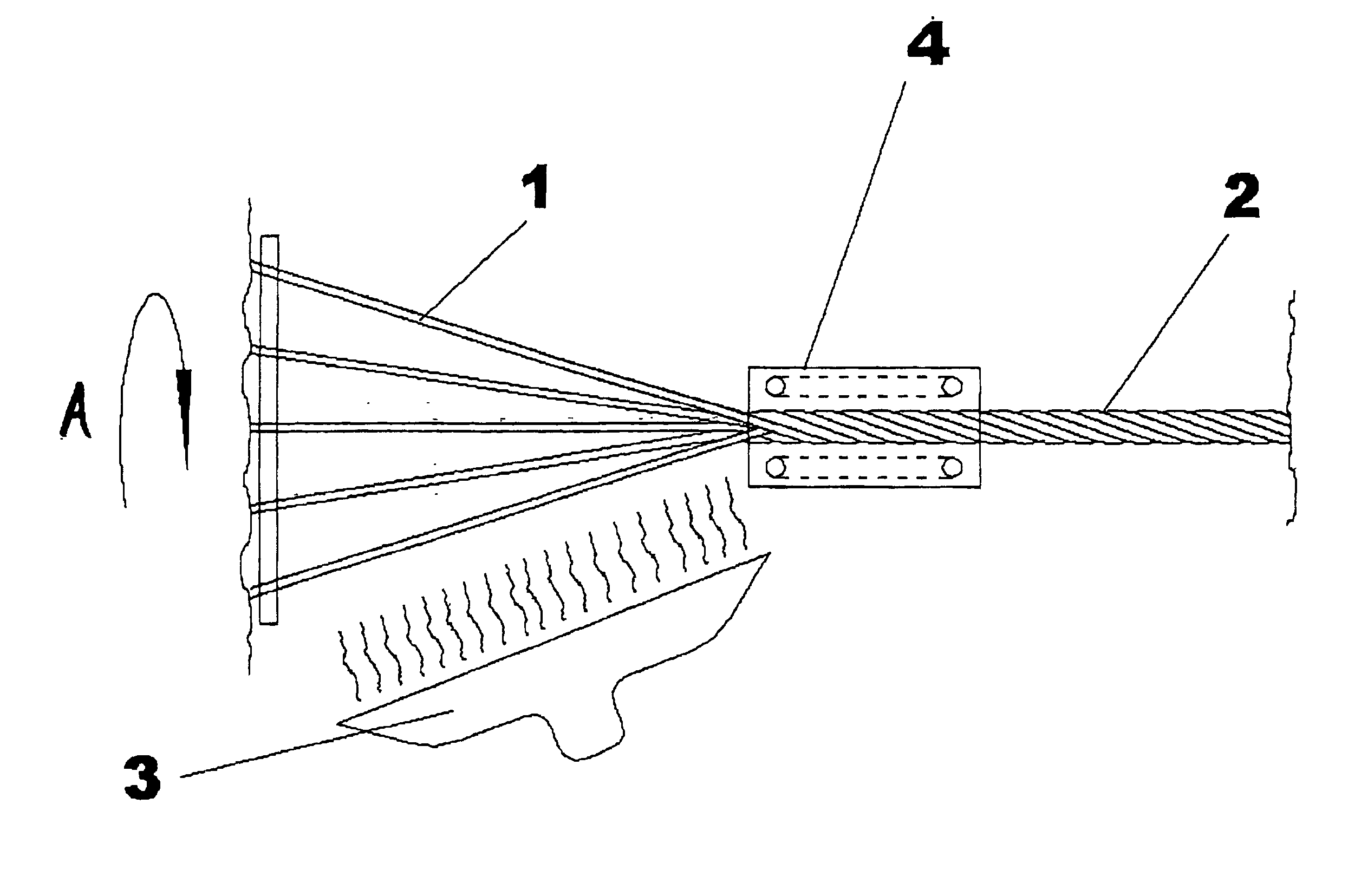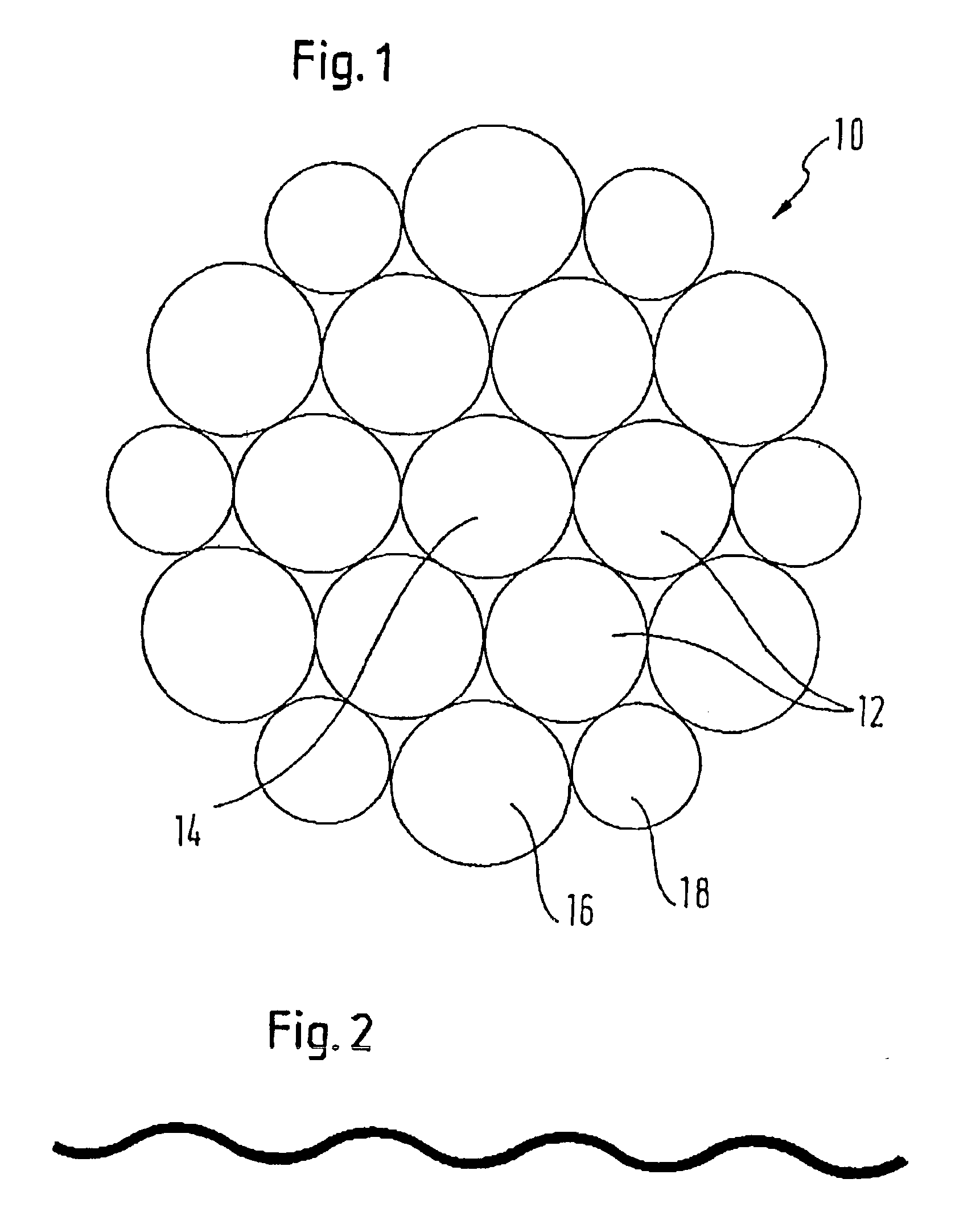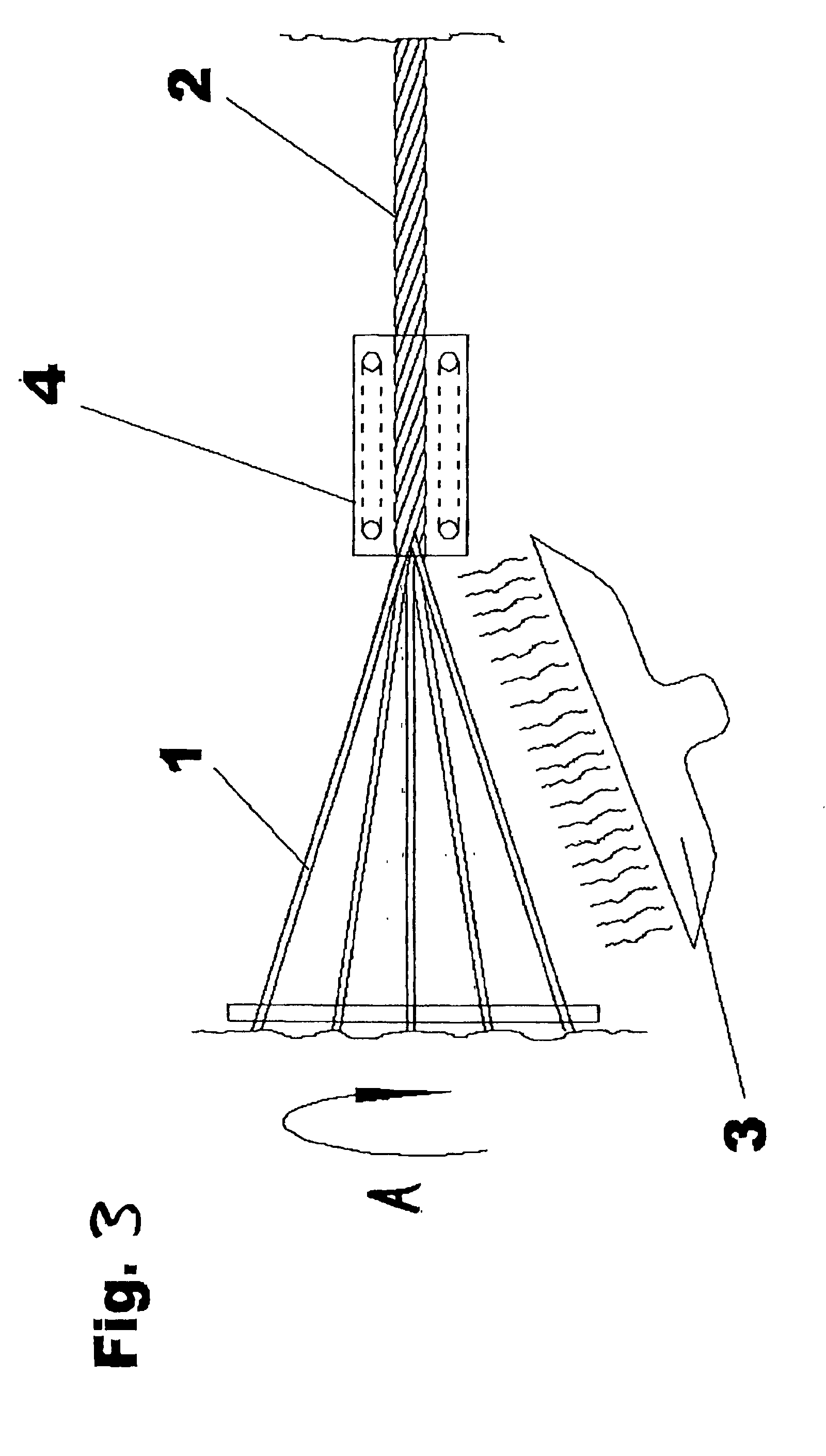Method and stranding device for producing a cable or a cable element
- Summary
- Abstract
- Description
- Claims
- Application Information
AI Technical Summary
Benefits of technology
Problems solved by technology
Method used
Image
Examples
Embodiment Construction
[0023] In a method according to an embodiment of the invention for producing a cable or cable element consisting of a combination of bearing fibres and a thermoplastic material which at least partly surrounds the bearing fibres, the individual elements, in particular the strands, are heated during the stranding process, until they are at least close to plastification so that the plastic material is at least close to plastification.
[0024] It must be noted that according to the invention, the strands do not have to be manufactured into a cable. Rather, it must be noted that typically the strands are themselves formed of several individual fibres which are at least partly coated with a suitable plastic material, if plastic fibres are used.
[0025] Generally, the individual fibres form the individual elements of a strand generated in this manner, which is twisted into the finished cable together with other strands. Thus, an individual element of a cable or a single strand should be genera...
PUM
| Property | Measurement | Unit |
|---|---|---|
| Temperature | aaaaa | aaaaa |
| Radiant heat | aaaaa | aaaaa |
| Stress optical coefficient | aaaaa | aaaaa |
Abstract
Description
Claims
Application Information
 Login to View More
Login to View More - R&D
- Intellectual Property
- Life Sciences
- Materials
- Tech Scout
- Unparalleled Data Quality
- Higher Quality Content
- 60% Fewer Hallucinations
Browse by: Latest US Patents, China's latest patents, Technical Efficacy Thesaurus, Application Domain, Technology Topic, Popular Technical Reports.
© 2025 PatSnap. All rights reserved.Legal|Privacy policy|Modern Slavery Act Transparency Statement|Sitemap|About US| Contact US: help@patsnap.com



